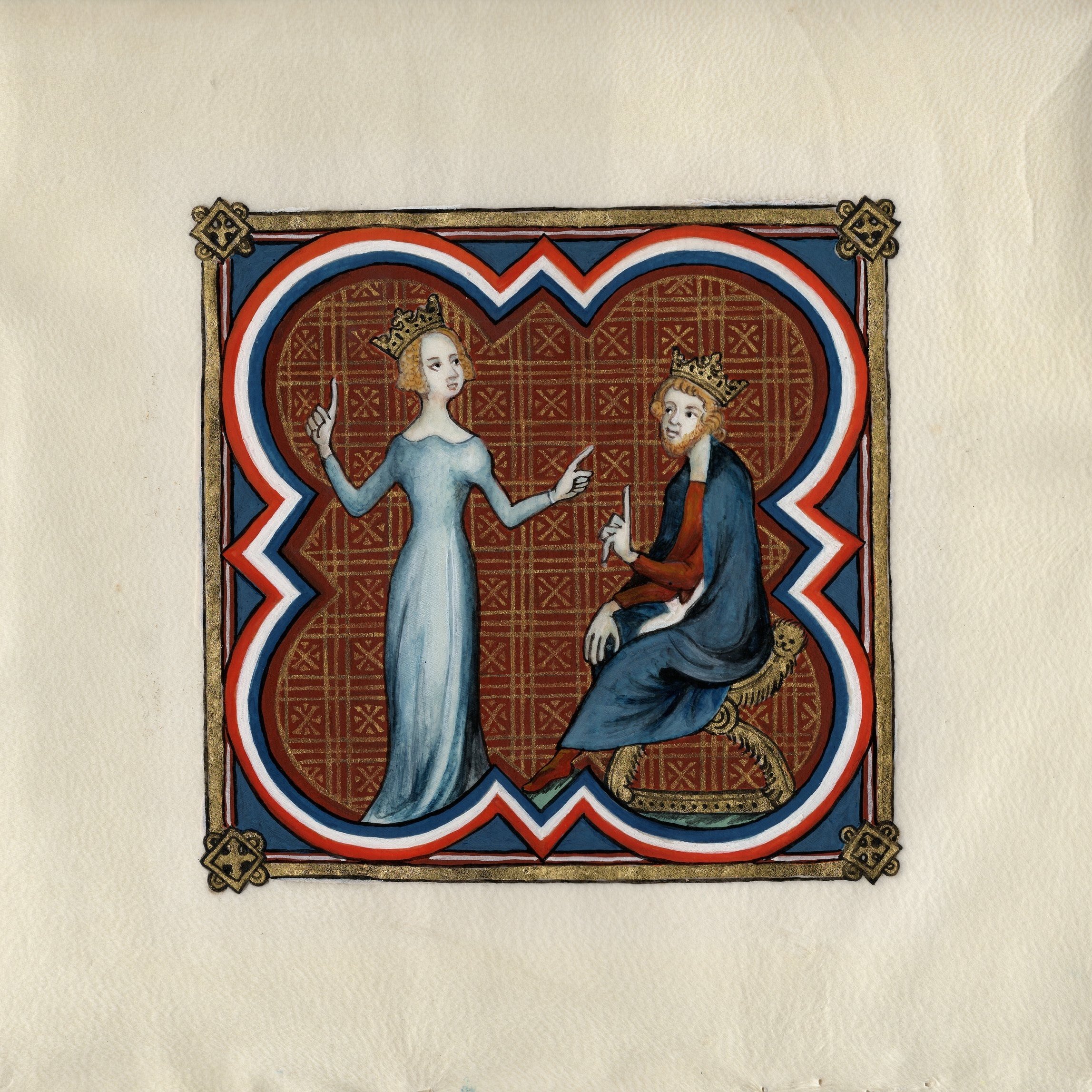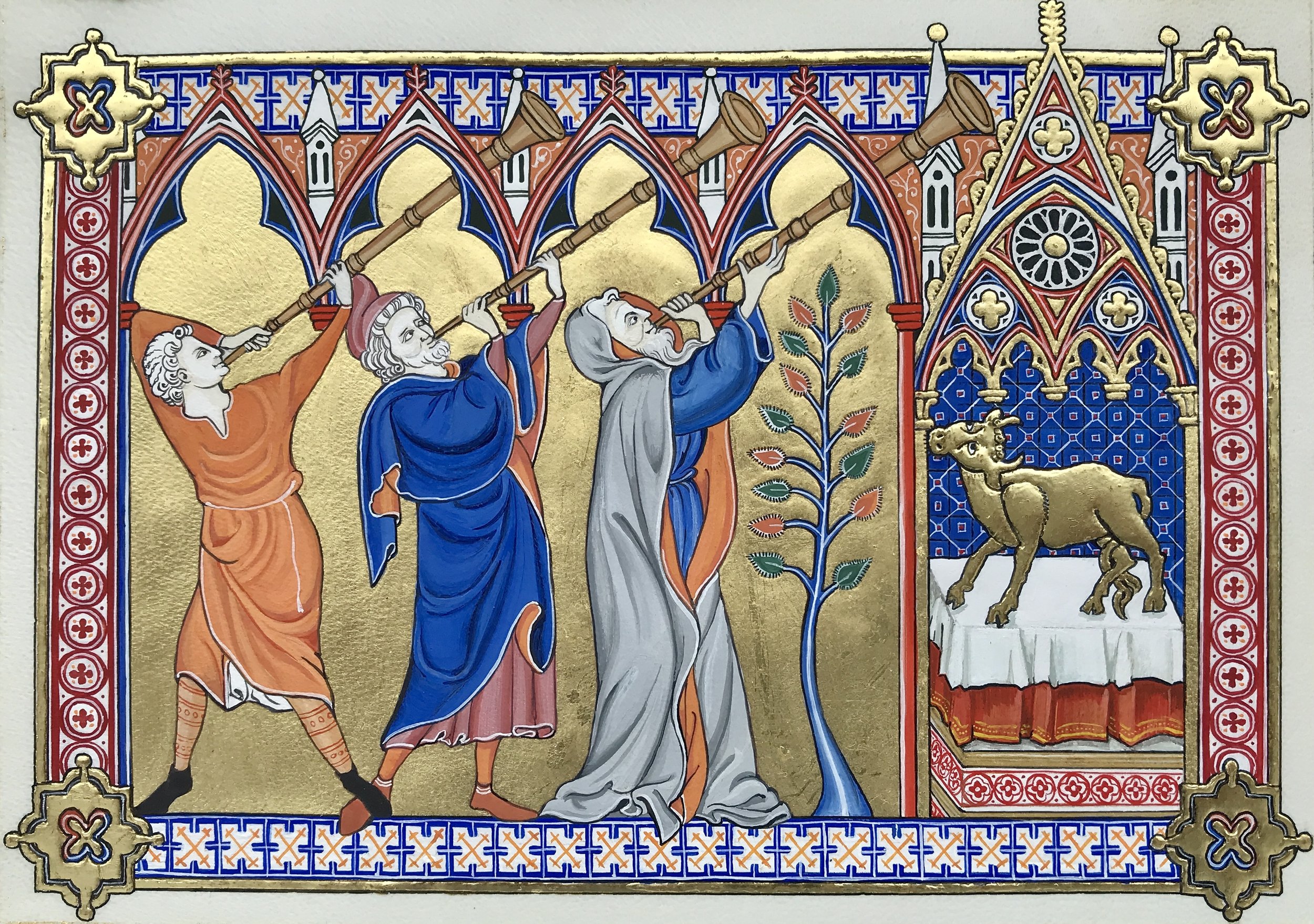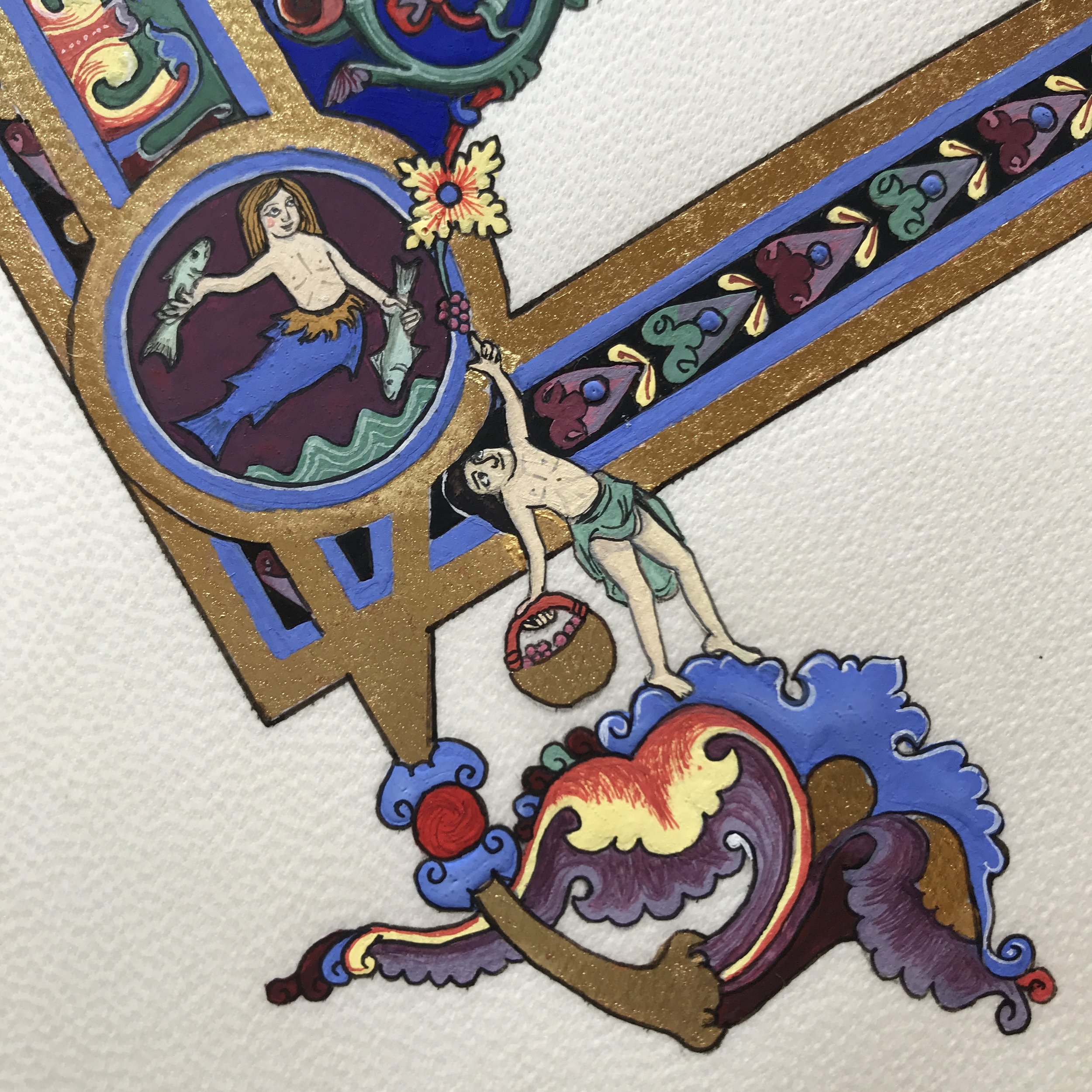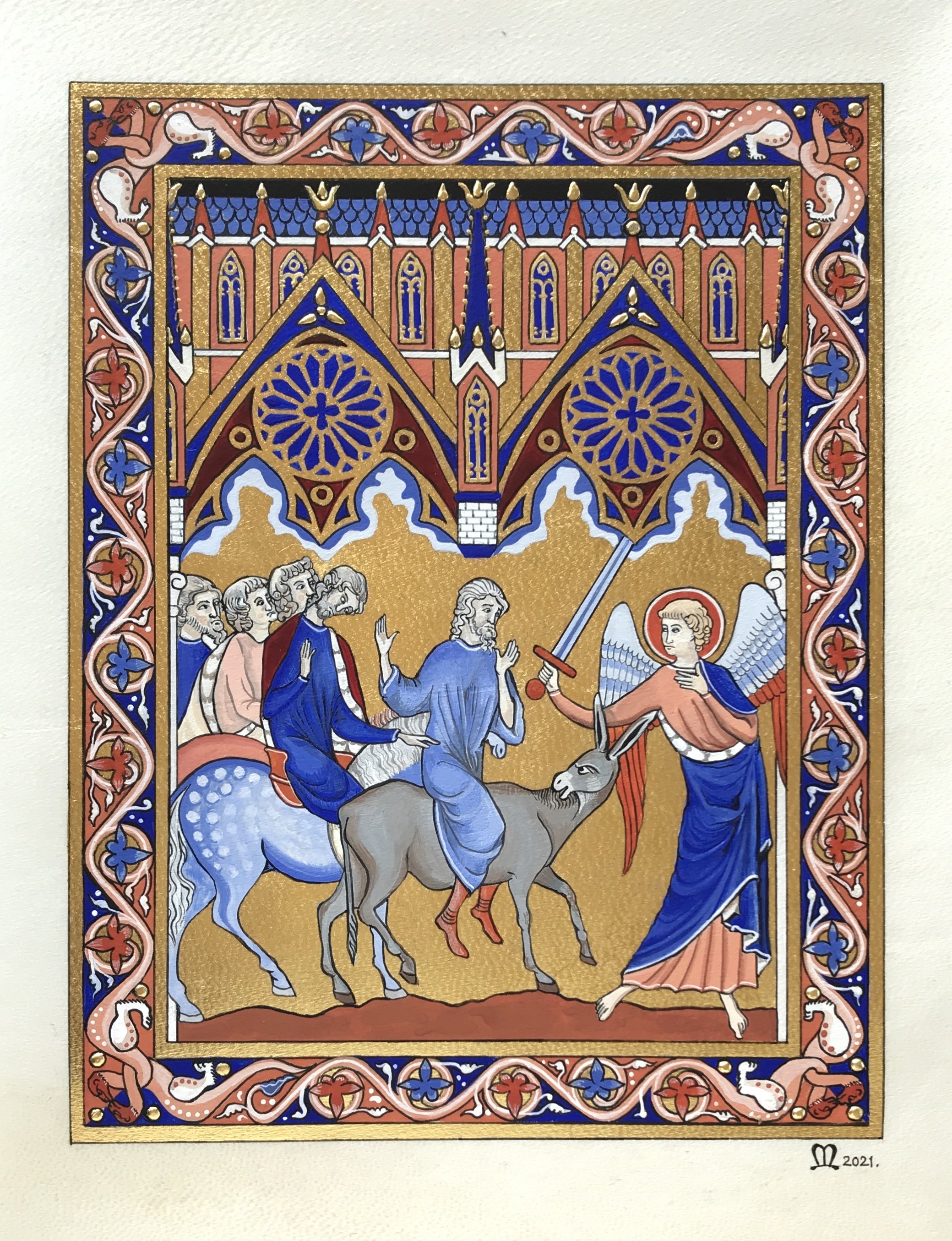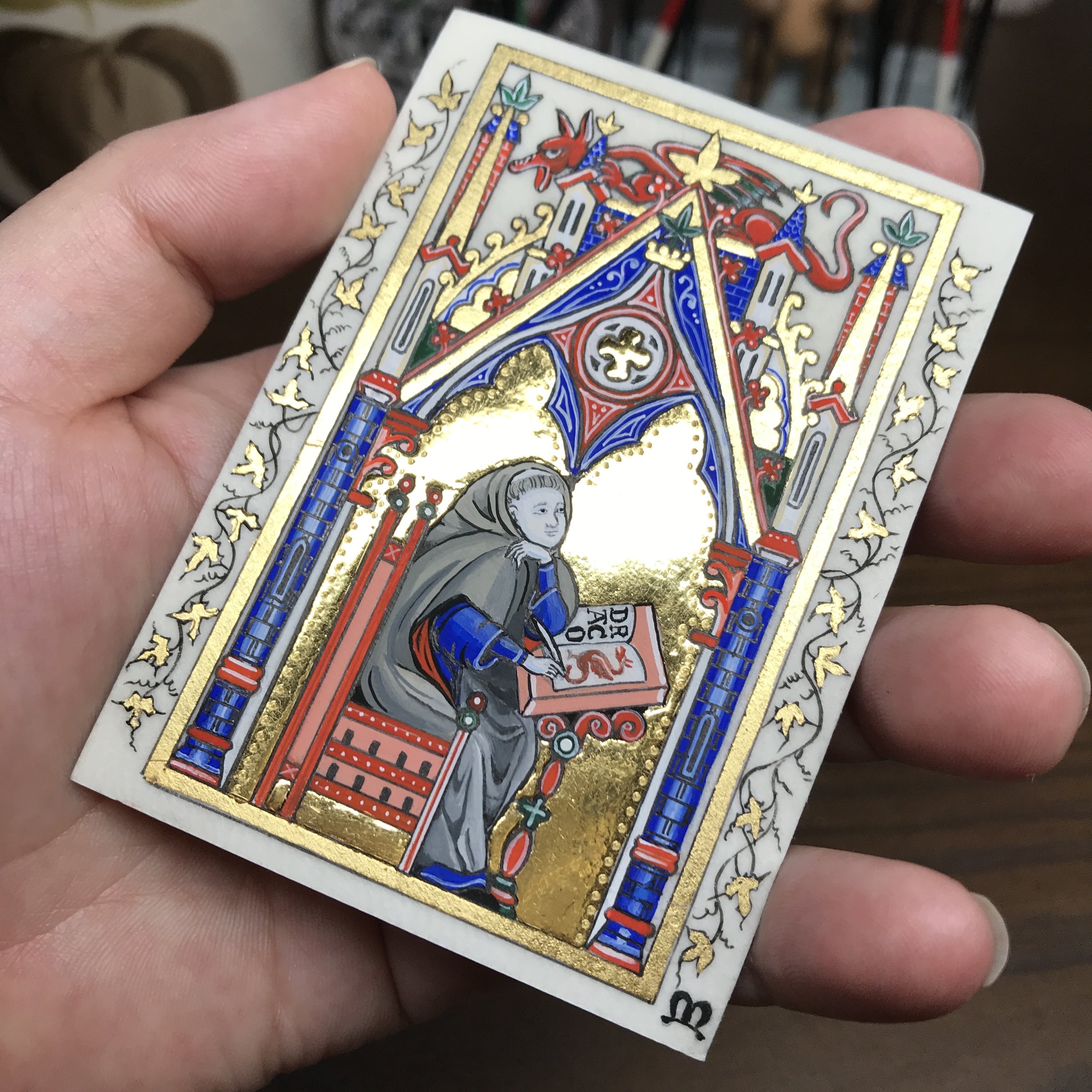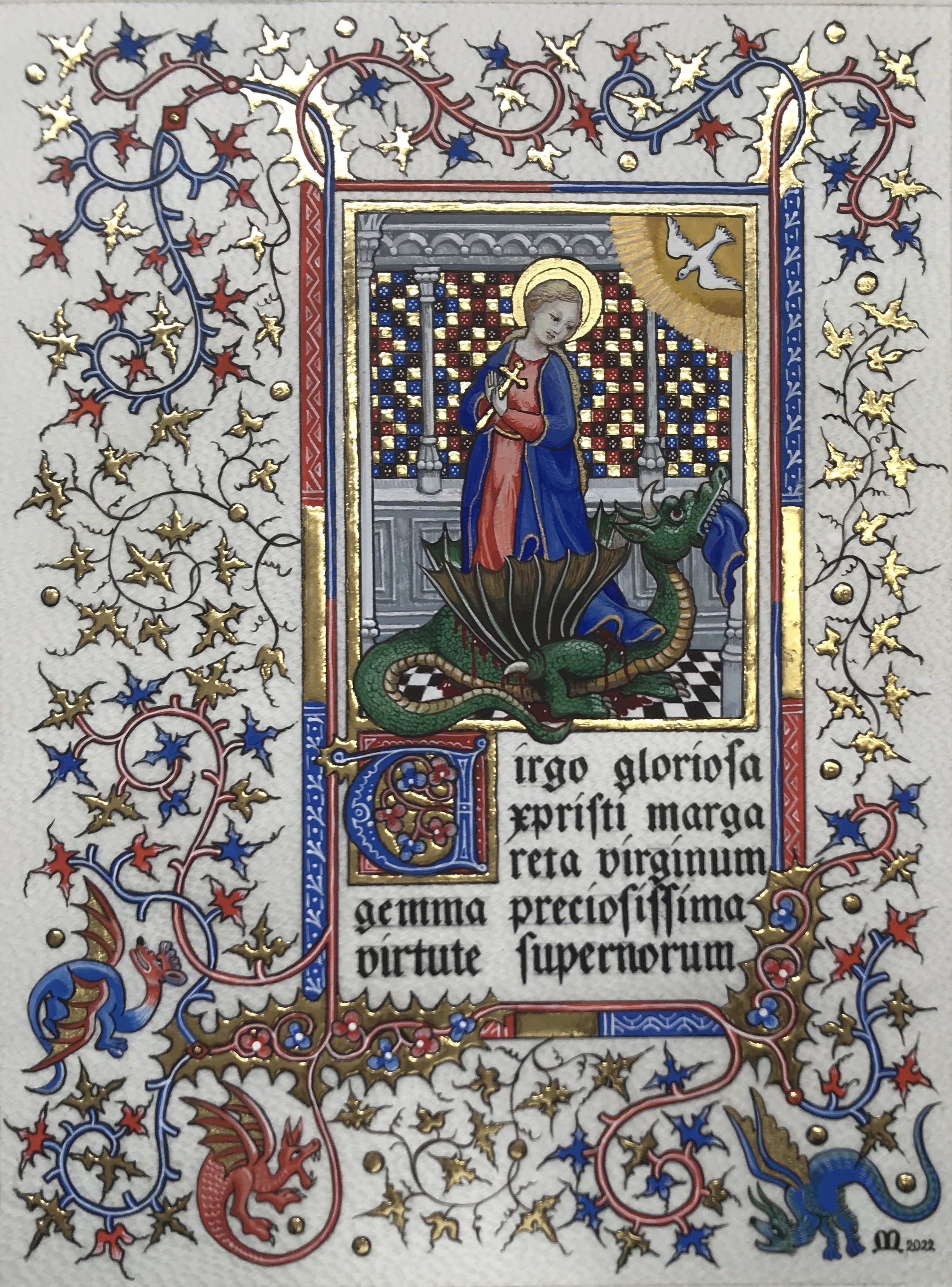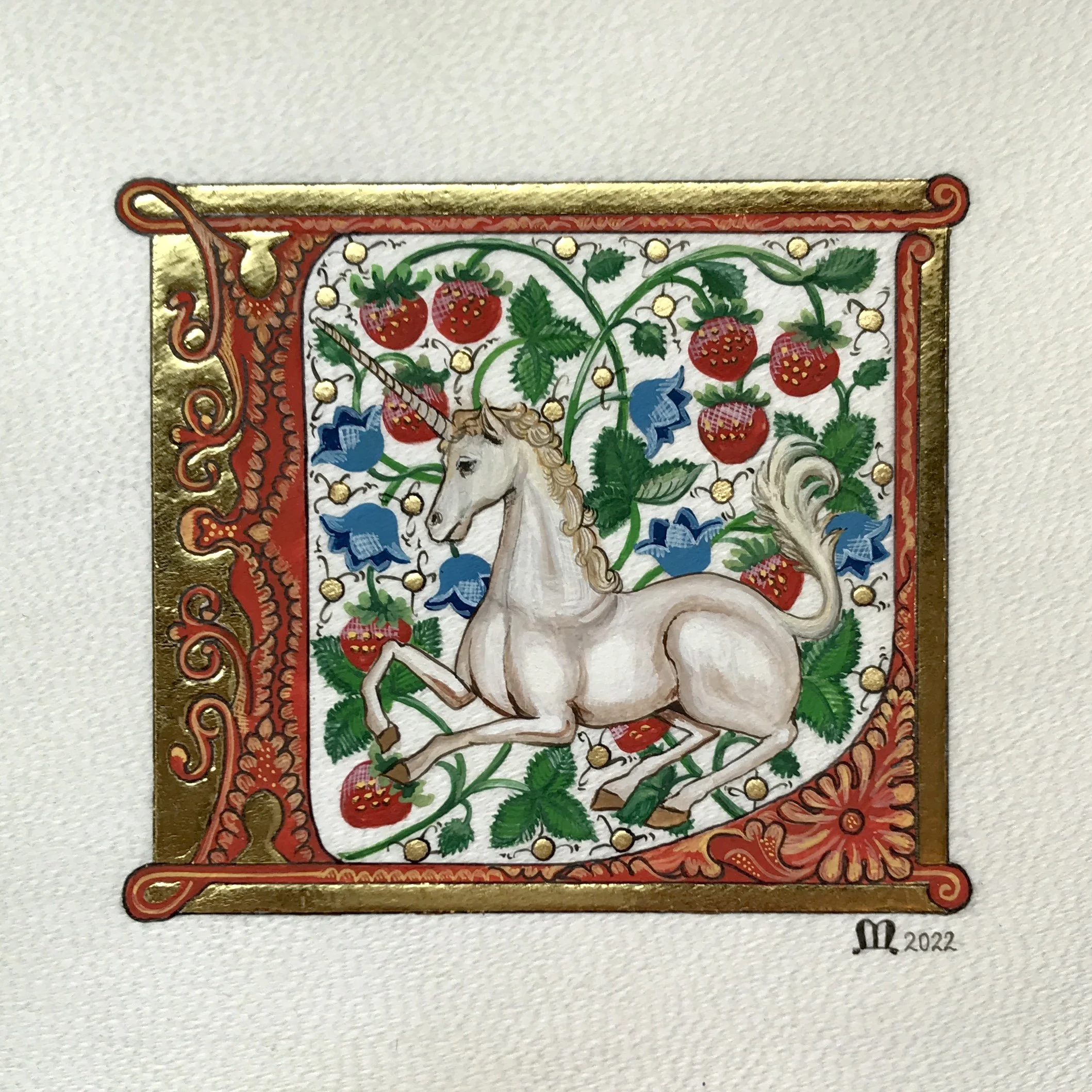Words of Illumination
Words of Illumination
Japanese-born artist Miho Kuroyanagi has dedicated her life to practicing and carrying on the medieval art of illumination.
Miho Kuroyanagi is a traditional enlumineur: an artist who works in the medieval craft of illuminated manuscripts and miniature illustrations. Here she shares her artistic journey, sources of inspiration, and the meaning and value she feels this ancient craft can offer to the world today.
What are the origins of the art of illumination?
The term illumination refers to a picture with gold or silver in it that reflects light, and here we are referring particularly to illumination with gold. From my point of view as an artist, there is no better material than gold to express all the nuances of light; and because gold doesn’t fade with time, this light will shine eternally. That’s why illumination is referred to as the ‘eternal light of God’, and it is quite natural that medieval painters would’ve wanted to use gold to express it.
Indeed, gold decoration in Europe goes back to the antiquity. However, until the 1200’s, for a variety of reasons it was restricted to only the most precious books. One of the reasons for this was probably due to the working conditions of the monks: they were writing and drawing in the alleys of monasteries which were exposed to the elements… hardly a good environment to use gold leaf.
Also some monasteries forbade the use of gold in prayer books like the monastery of Citeaux in France, because they considered that gold was too luxurious and did not fit to a life of austerity. However, during the 13th century, scribes and painters changed their working environment and started to write and to draw inside closed rooms; at the same time private citizens started to create illuminated books. That’s why there is a wide dissemination of gold illuminated books at the end of the medieval period in Europe.
What inspired you to become an enlumineur, and how did you learn your craft?
I was very influenced by my grandfather, who was a Japanese traditional painter. When I was a child I often sat beside him while he was working, and loved his artwork very much. Then when I became older, I discovered Occidental medieval art and found there were a lot of similarities between this style and the art of my grandfather. In addition to this, I was also very interested in Christian religion and history.
ARtwork by Miho’s Grandfather
These two elements drew me toward illuminated manuscript art. I will never forget the first time I saw an illuminated manuscript: it was in Burgundy, France, when I visited a local museum. The colors were so bright: the blues, reds and greens! The gold illuminations were so beautiful… but at the same time, the overall work was expressing pious devotion and faith.
The more I looked at the piece, the more I discovered small details that made the work so vivid and full of life. The little animals and strange characters hidden within the borders were so surprising and funny! I couldn’t take my gaze away from it… and I discovered that the parchment these works were created on has a texture that changes with time, which is so different from paper or canvas.
I was filled with such a strong desire to have one of these works to hang on my wall at home, because it was so beautiful. However due to these works being quite rare, since I couldn’t get my hands on one of these pieces I felt I needed to create one myself. At that time I was working for a company in Japan, but after I went home I decided to quit my job and returned to France to learn the basic techniques of traditional medieval illumination from a professional enlumineur.
After studying in France, I acquired further skills and knowledge from an enlumineur living here in Japan (in Tokyo, you can find all sorts of specialists!) and now I continue my own self-directed studies by reading specialized books on European Medieval art.
You mentioned a similarity between traditional Japanese art and European medieval illumination. Can you say more about this?
European medieval illuminated books have a lot in common with Japanese medieval art—for example, neither aims to depict their subjects through realism. They don’t use any form of perspectivism, nor shadows. Characters and objects are clearly outlined, and facial expressions are very simple and often deformed. Drawings are often accompanied with text, because the telling of a story is fundamental to the work. Both art forms also use gold applications etc.
I really feel attracted to the art of illuminated manuscripts because they reduce the distance between the artwork and the viewer—when you go to European museums, you may notice that the paintings and, generally speaking, all works of art are quite big; you must take some distance to observe them in order to receive all the information they contain.
However, I personally prefer small art forms that you can enjoy and comprehend at a close distance. This is probably due to my Japanese cultural background. aAn illuminated manuscript must be observed from a very short distance, around 30 cm, to fully appreciate all the details, and this very short distance is the most effective way to look at Japanese traditional artworks as well.
What sources do you draw from for inspiration in your work?
Like my predecessors living in medieval times, my inspiration mainly comes from the Bible. When I read the scriptures I often visualize the scenes, and from there I will draft a project. I especially like the old testament stories because they are often surprising and baffling, especially for someone like me who comes from a different cultural background.
What do you hope to offer the world through your work as an enlumineur?
A manuscript is a piece of work made by hand, where you can feel the human element, the sense of craftsmanship. This is why I work only freehand, and don’t look to achieve perfection like a machine. I try to use these materials in as authentic a way as possible, because I believe in this digital age it is more and more important to show the beauty of human art and craftsmanship.
We are surrounded by identical products and machines, and distinct, human-made objects are rarer than ever. I feel it’s very important to create new human crafts and artworks, and to share them all throughout the world. Illuminated manuscripts are a beautiful form of art that has become almost forgotten, and through my work I hope that I can contribute to their recognition and renewal.
Today almost all the historical manuscript books are stored in museums and libraries, very rarely exhibited compared to canvas-paper artworks. And because it is impossible to feel the parchment texture and gold shine through digital images, digital tools are not able to capture and express their true essence.
That’s why I’ve decided to create manuscripts one page at a time, on different themes at a fairly low price, so that people around the world can enjoy this unique form of art. I hope my work will increase the visibility of illuminated manuscripts, and arouse curiosity and interest in this beautiful form of art!
— Follow the work of Miho on Instagram and at atelierduherissondor.com —





